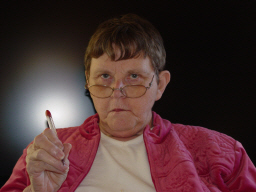A copyright gives a writer “ownership” of a literary work. This means the copyright owner has the right to make copies, sell copies, and distribute copies of the work, as well as the right to license others to do these things. It also gives the copyright owner legal recourse should someone else make copies, sell copies, or distribute copies—in all or in part—of the copyrighted material. Once granted, a copyright protects the work for 50 years after the death of the copyright holder.
Now, for the good news: regardless of whether the work has been registered with the US Copyright Office, the writer of a work automatically owns the copyright. The only exception to this is if the work is completed under “works for hire” provisions, which means someone else commissioned the writer to do the work. An example of this exception would be work created under a ghostwriting contract (unless the contract states otherwise, of course).
However, should your copyright ever come into question, either because an unauthorized person has copied your work or because someone claims to have created the work first, it will be up to you to prove you are the author of this work. There are various ways you can offer this proof, such as by keeping various work-in-process versions of the work, by sending your work to a trusted friend via email, or by mailing a copy of the work to yourself (have the postal clerk hand-stamp the postmark, make sure the date appears clearly, and have the clerk seal the package—and then don’t open the package). Even though you may be able to prove your ownership, you still won’t have the public record of a copyright claim, nor can you file an infringement lawsuit until your work is officially registered.
So, if you plan to publish your work and offer it publicly, you should register your work with the US Copyright Office.
When should you file for a copyright? You should not file for a copyright until your work is fully complete, edited, proofed, and ready to be published. Second, you should not file for a copyright if you plan to publish traditionally or, in some cases, with a full-service self-publisher. In these cases, your publisher will very likely make changes to your work to follow in-house style guides, and once your work is ready to go to print, your publisher will file your copyright for you. There is no need to copyright your work before it is published—and doing so may create a great deal of added work and expense.
Even if you have not yet filed for your copyright—or, if you have filed and have not yet received confirmation (it takes 8 to 13 months for the US Copyright Office to process your request for copyright), you may still use the copyright symbol and a copyright notice on your work. This notice is not required for your work to be covered by copyright, but including a notice of copyright could be beneficial, since it gives a reminder that your work is under copyright protection, it identifies to whom the copyright belongs to, and it gives the year the work was first published.
The copyright notice should be placed on the back of your title page. (You should not add a watermark to every page screaming “COPYRIGHTED MATERIAL.” This serves only to identify you as an amateur.) The copyright symbol ( © ) can be created in Microsoft Word by typing a left parenthesis, the letter “C,” and a right parenthesis, with no spaces. MS Word will convert this automatically to the copyright symbol. Alternately, you can spell out the word “copyright.” The copyright symbol or word should be followed by the year the manuscript was first published (or requested to be published) and the owner of the copyright (your name or company). It should also include the statement “All rights reserved.” Here’s an example of how this should look: “© 2002 Sandy Tritt. All rights reserved.”
Other statements may follow the copyright notice. There are several formats that can be used, so you may want to examine the title page of several books and novels to see the type of material that may be included here. Here is a simple example:
Copyright © 2016 by Your Name. All Rights Reserved. No portion of this book may be reproduced in any form without written permission from the publisher.
This Is My Book is a work of fiction. Names, characters, places, and incidents are either a product of the author’s imagination or are used fictitiously. Any resemblance to actual persons, living or dead, events, or locales is entirely coincidental.
PRINTED IN THE UNITED STATES OF AMERICA
You may register your copyright either online or by snail mail. The application to register a copyright includes three requirements: completing the application form, paying a filing fee (currently $35), and submitting a non-returnable copy (or two, if you submit by snail mail) of your work. As of this printing, the wait time for an online application is 8 months, and the wait time for a snail-mailed application is 13 months, so it is more expedient to apply online.
To file online, go to the Copyright Office website at http://www.copyright.gov/eco/. Be sure to read the tutorial on how to apply, and be aware that you’ll need to file Form TX. When you apply online, you can upload the final, proofed copy of your manuscript as it will appear when published. Also, be aware that a $35 fee (as of this printing) is required when you submit the request.
If you prefer to register by snail mail, you must first get an application from the Copyright Office website (www.loc.gov/copyright) or by calling the Forms and Publications Hotline at 202-707-9100 (You will want Form TX). Once you’ve completely filled out the application, you can send it with a $35 filing fee and two copies of your book to:
Library of Congress
Copyright Office
101 Independence Avenue, S.E.
Washington, D.C. 20559-6000
You will not receive your material back from the Copyright Office.
One final word of warning: there are many scams associated with filing a copyright, so, as in all things, tread carefully. There are many companies who are willing to file your copyright for you—for a small fee. There is no reason to do this, as you will still need to fill out the forms, pay the copyright fee, and submit a copy of your book. It saves you no time and only costs you more money. There are also companies who claim they can “bypass” the wait or have special ways to deal with the bureaucracy. RUN! There is no way to speed up the process. Some scams claim they have an “alternate” copyright that is easier and faster. THERE IS NO SUCH THING. And, finally, some companies will access the Library of Congress listings and send you an email or letter stating that they have seen your work and want to publish your work. This is another scam by so-called “subsidy” publishers to separate you from your money.
So be careful out there. Learn to copyright—not wrong.







